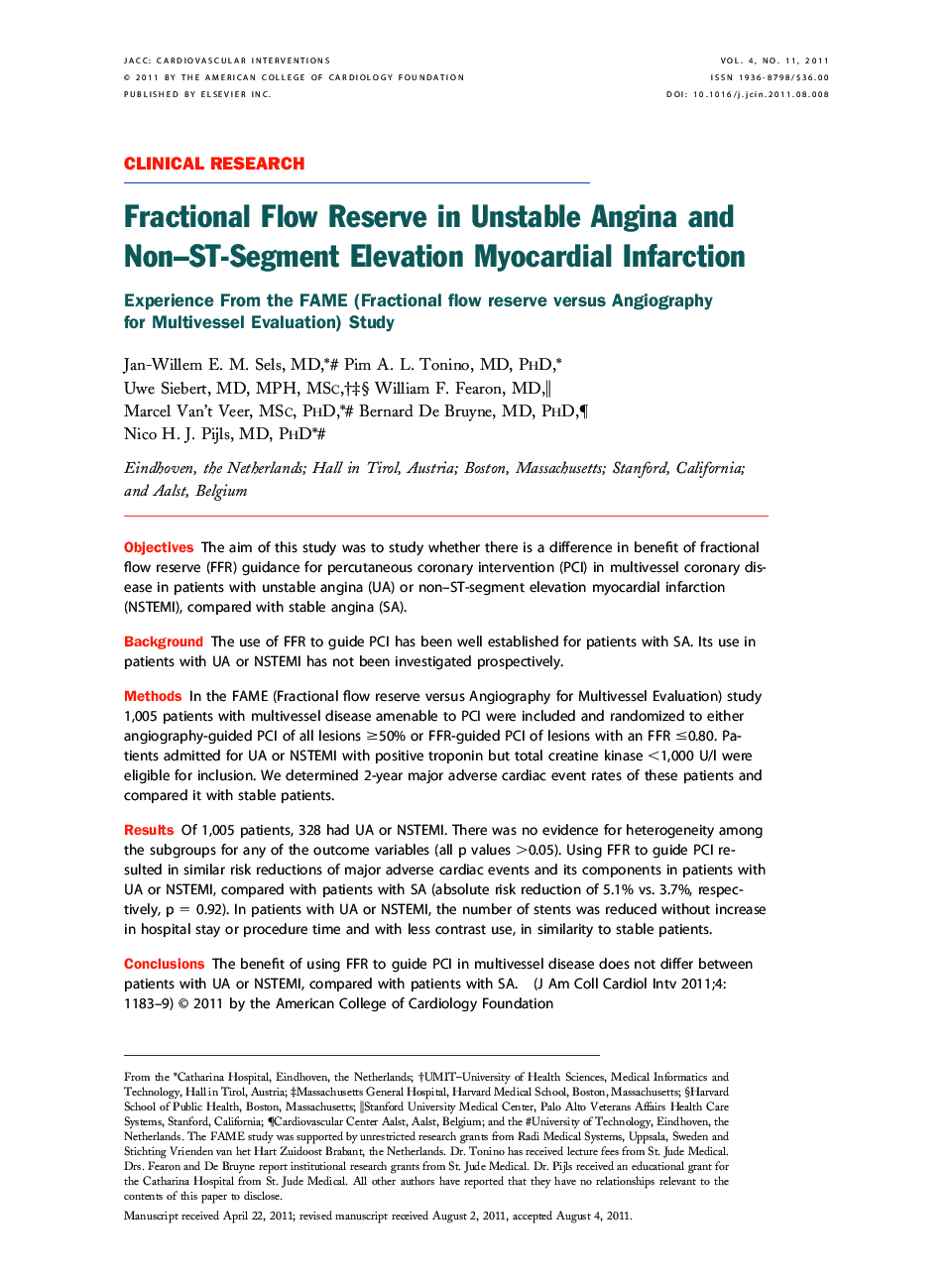| کد مقاله | کد نشریه | سال انتشار | مقاله انگلیسی | نسخه تمام متن |
|---|---|---|---|---|
| 2940788 | 1177043 | 2011 | 7 صفحه PDF | دانلود رایگان |

ObjectivesThe aim of this study was to study whether there is a difference in benefit of fractional flow reserve (FFR) guidance for percutaneous coronary intervention (PCI) in multivessel coronary disease in patients with unstable angina (UA) or non–ST-segment elevation myocardial infarction (NSTEMI), compared with stable angina (SA).BackgroundThe use of FFR to guide PCI has been well established for patients with SA. Its use in patients with UA or NSTEMI has not been investigated prospectively.MethodsIn the FAME (Fractional flow reserve versus Angiography for Multivessel Evaluation) study 1,005 patients with multivessel disease amenable to PCI were included and randomized to either angiography-guided PCI of all lesions ≥50% or FFR-guided PCI of lesions with an FFR ≤0.80. Patients admitted for UA or NSTEMI with positive troponin but total creatine kinase <1,000 U/l were eligible for inclusion. We determined 2-year major adverse cardiac event rates of these patients and compared it with stable patients.ResultsOf 1,005 patients, 328 had UA or NSTEMI. There was no evidence for heterogeneity among the subgroups for any of the outcome variables (all p values >0.05). Using FFR to guide PCI resulted in similar risk reductions of major adverse cardiac events and its components in patients with UA or NSTEMI, compared with patients with SA (absolute risk reduction of 5.1% vs. 3.7%, respectively, p = 0.92). In patients with UA or NSTEMI, the number of stents was reduced without increase in hospital stay or procedure time and with less contrast use, in similarity to stable patients.ConclusionsThe benefit of using FFR to guide PCI in multivessel disease does not differ between patients with UA or NSTEMI, compared with patients with SA.
Journal: JACC: Cardiovascular Interventions - Volume 4, Issue 11, November 2011, Pages 1183–1189